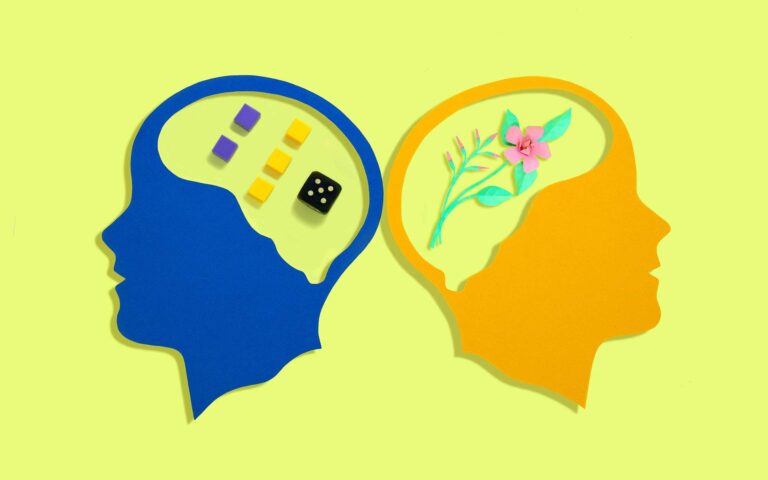“`html
Overview:
- Studies on mindfulness in relation to autism indicate that it might have unforeseen and negative effects for neurodiverse individuals, contrasting with experiences of neurotypical individuals.
- Even though mindfulness teachings are gradually becoming more inclusive, individuals with autism and other neurodiverse conditions are frequently overlooked.
- It is possible to learn how to impart mindfulness practices in a manner that is inclusive and respects the unique cognitive patterns of each individual.
“When I’m instructed to focus on my breath sensations, it feels like a noose is tightening around my neck, becoming more constrictive the more I concentrate.”
This remark is from an insightful young woman on the autism spectrum, who was advised by her healthcare provider that mindfulness would alleviate her anxiety. Instead, she found it aggravated her anxiety and left her with a sense of failure.
When mindfulness doesn’t resonate with someone, it’s not a reflection of their personal shortcomings. Instead, it’s often due to a lack of appropriate, inclusive mindfulness education that takes individual needs into account.
Regrettably, I hear accounts like this regularly. I am participating in a mindfulness research initiative at the Azrieli Adult Neurodevelopmental Centre at the Centre for Addiction and Mental Health (CAMH) in Toronto. Throughout the research, numerous neurodiverse individuals have expressed to me that they have dropped out from mindfulness practices. Members of neurodiverse communities have shared various sensory experiences that lead to diverging and often negative results from standard mindfulness techniques like body scans, breath exercises, and loving-kindness meditation. Individuals with neurodevelopmental conditions such as autism, ADHD, or cerebral palsy inform me that they’ve attempted mindfulness only to feel they have “failed.” Additionally, some educators have reported that they avoid using the term mindfulness in their classrooms because past experiences have caused some students to feel like they couldn’t succeed at it.
When mindfulness fails to work for someone, it’s not their fault. They may not have been taught mindfulness in a way that is accessible and acknowledges their unique requirements. Discussions about accessibility and neurodiversity are seldom included in mindfulness contexts, yet they hold immense potential for both these communities and the practice itself. As a mindfulness instructor, I aim to make sure that everyone can experience mindfulness teachings in a way that aligns with their needs.
Understanding Neurodiversity
As Jenna Nuremberg notes in her 2020 book Divergent Mind: Thriving in a World That Wasn’t Designed for You, neurodiversity refers to “acknowledging and valuing the variety of brain structures rather than labeling some as typical and others as atypical.” Similarly, the Autism Awareness Centre describes it as “the idea that humans come with a range of neurological variations rather than a single ‘normal’ standard,” and that all variations of brain function are deserving of respect. Mindfulness, in a comparable way, urges us to acknowledge our internal experiences—observing our thoughts and feelings with acceptance and without judgement.
If mindfulness teachers do not embrace and appreciate ALL types of brain function within their teachings, then they fail to make mindfulness truly accessible. The anecdote I mentioned earlier, regarding the sensation of a tightening noose, exemplifies the experience of mindfulness for someone on the autism spectrum (autism being just one representation of a neurodiverse mind).
Autism affects individuals across all racial, ethnic, and social backgrounds, with statistics from 2018 indicating that 1 in 42 boys and 1 in 165 girls were diagnosed with autism. However, autism is not the only example of neurodiversity that may go unnoticed in mindfulness circles. Conditions like dyslexia, ADHD, mild cerebral palsy, and mild intellectual disabilities may often remain undiagnosed. Many first-time mindfulness practitioners may not recognize why they struggle to connect with the practices being presented. Therefore, it’s essential for instructors to be mindful of the inclusivity of their teaching methods.
Barriers to Mindfulness Accessibility
What contributes to the difficulty mindfulness instructors face in implementing genuinely accessible practices? A primary reason is that the traditional approach to teaching mindfulness was established with a neurotypical audience in mind.
Mindfulness-Based Stress Reduction (MBSR), developed in the 1970s at the University of Massachusetts Medical School under Jon Kabat-Zinn, introduced mindfulness to the healthcare sector. However, this program was primarily designed without adaptations for neurodiverse populations. This lack of consideration has significant implications today: Many mindfulness instructors, despite being well-trained in MBSR and similar therapies, often lack the awareness needed to identify neurodiverse students among them.
Fortunately, the field of mindfulness research and instruction is beginning to evolve—one positive change is the incorporation of trauma-sensitive approaches, with contributions from David Treleaven’s work. However, we still have a long way to go regarding inclusive practices that genuinely provide accessible mindfulness options.
Though mindfulness research is progressing, we still have significant gaps in implementing truly accessible inclusive practices.
For instance, the scientific concept of interoception—which is being increasingly discussed in relation to neurodiversity—refers to the capability to truly perceive physical sensations within the body. Recognizing feelings of hunger or the need to use the restroom are examples of interoceptive processing; being able to differentiate various bodily sensations related to emotions is another. Mindfulness can significantly enhance interoceptive skills—for example, by paying attention to the rise and fall of our breath. Nonetheless, interoception isn’t a universal skill; some individuals have brains that are better at feeling physical sensations while others are more adept at visualizing.
Moreover, some individuals may have a condition known as aphantasia—where one cannot mentally visualize images. Research at the University of Exeter Medical School indicates that around 2% of the population are non-visual thinkers. Thus, if someone cannot visualize a loved one during a loving-kindness exercise, this does not mean they are failing; it simply indicates that their technique may require modification. Understanding these diverse brain wiring patterns is crucial for enhancing our mindfulness experiences.
Over the past decade, the Azrieli Adult Neurodevelopmental Centre at CAMH has been researching how mindfulness can better serve individuals on the autism spectrum. I have played a significant role as a mindfulness facilitator in this research, leading groups with advisors and creating adaptations to MBSR methods to improve accessibility. Crucially, autistic individuals take on advisory functions in this research process, which is integral to the project. The research also encompasses mindfulness training for caregivers of neurodiverse individuals, further extending its benefits within Azrieli’s neurodevelopmental disability community.
Dr. Yona Lunsky, the Director of the Azrieli Adult Neurodevelopmental Centre and a psychiatry professor at…
“`
Dr. Lunsky, from the University of Toronto, has been leading initiatives focused on mindfulness in the community for nearly ten years. He emphasizes, “Our adaptability in teaching mindfulness hinges on collaboration and applying our mindfulness skills: we approach our teaching with awareness of the present, curiosity, open-mindedness, and compassion. Being willing to adjust our methods is crucial for creating something impactful. This process takes time and evolves, which adds to its excitement.”
Many mindfulness instructors utilize metaphors and complex language that can be challenging for individuals with autism. Additionally, some sensory-based exercises can be particularly difficult for those on the spectrum.
Incorporating mindfulness into neurodiverse communities pushes me to deepen my mindfulness training and think outside the box, allowing me to present traditional mindfulness practices in a manner that benefits a wide range of cognitive profiles. As an instructor, my responsibility is to teach in a way that resonates with the individual learner. If I rigidly adhere to a predetermined script or try to present mindfulness in a specific format, I may fail to connect with the unique perspectives of my students. It is essential for me to have a solid understanding of the teachings so I can convey them in a personalized manner.
Daniel Share-Strom, an autistic advocate for mindfulness meditation, lends his expertise as an advisor to our mindfulness research program at CAMH. His widely-viewed TED Talk, “Dear Society…Signed, Autism,” humorously recounts his experiences as an autistic individual navigating communication, learning, and engagement with the world. Here are some insights Daniel has shared with me about mindfulness:
- “During my personal mental health journey, I discovered mindfulness, which was one of the first methods that genuinely alleviated my anxiety. …I believe it is crucial to modify mindfulness teaching to be more suitable for neurodiverse groups. There are aspects of traditional mindfulness that do not align with the experiences of autistic individuals. Many mindfulness instructors rely heavily on metaphors and abstract concepts that can be hard for autistic people to understand. Additionally, some sensory activities can prove challenging for them.”
- “Autistic individuals often face significant mental health challenges—from heightened anxiety to an adult suicide rate that may be up to nine times higher than the general population. This is largely due to growing up in an environment that is not tailored for us—in many respects. From sensory experiences to social norms dictated by neurotypical individuals, which we had little say in, these factors can create various hurdles. Mindfulness serves as a valuable resource for helping autistic people manage these issues. It’s all about finding ways to adapt it to be effective.”
The contributions and insights from Daniel and others highlight the importance of innovating our mindfulness teaching methods to respect neurodiversity and to truly personalize mindfulness for each individual.
Insights for Inclusive Mindfulness Teaching
When asked how mindfulness can assist autistic adults, I suggest flipping the question to “How can autism enhance mindfulness?” In my experience, it required extensive input from various neurodiverse individuals—sometimes patiently, sometimes not—before I could develop more inclusive and accessible mindfulness methods. Understanding how autistic people relate to mindfulness has encouraged me to rethink my teaching approach entirely. It has taught me to appreciate the diverse connections people have with mindfulness and explore those together. By personalizing the practice, the path truly becomes individual to each person.
Mindfulness holds immense potential for positive impact in the world. Meanwhile, neurodiversity contributes valuable perspectives to mindfulness. Let’s envision how a more inclusive mindfulness culture can help forge a more accepting world, one that is genuinely accessible and beneficial for everyone.


